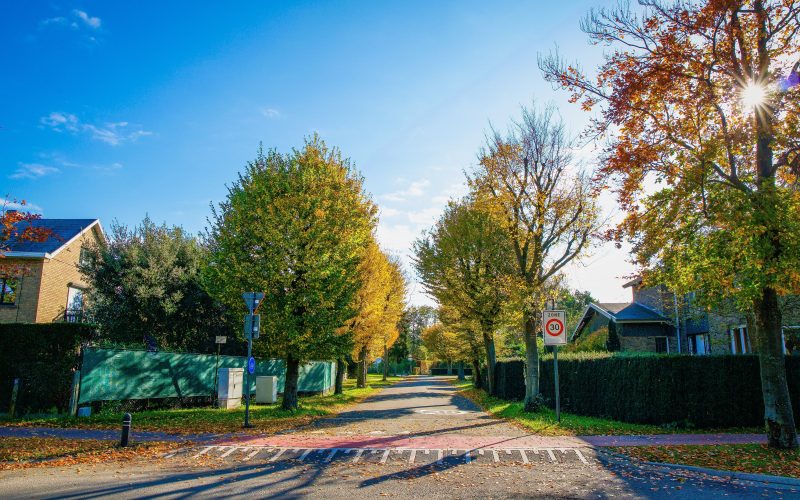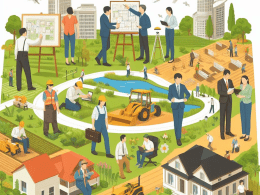The COVID-19 pandemic has brought about a paradigm shift in the way we live our lives. While many aspects of life have been severely impacted, perhaps none have seen as much change as the real estate market. With people spending more time at home than ever before, and with remote work becoming increasingly common, many are reevaluating their living situations. For some, this means leaving congested cities behind and moving to suburban areas that offer more space and a better quality of life. In this blog post, we’ll explore how COVID-19 is accelerating the shift to suburban living and reshaping the real estate market in profound ways.
The Suburban Shift
It’s no secret that the pandemic has spurred a mass exodus from cities to suburbs and small towns. According to a recent study by Redfin, nearly half of homebuyers are looking to move to a less densely populated area. And it’s not just families with children who are making the suburban shift – singles and couples without kids are also looking for more space and greater safety from the virus.
There are several reasons for this suburban shift, which is being accelerated by the pandemic. First, many people are now working remotely full-time or at least part of the time, which gives them more flexibility to live outside of city centers. Second, the pandemic has made us all reassess our priorities, and for many people that means valuing space and safety over proximity to nightlife and restaurants. Finally, the real estate market in many cities has become unaffordable for many buyers, while suburban markets are still relatively affordable.
This shift to suburbia is already having a major impact on the real estate market. According to Redfin, homes in suburban zip codes received 11% more pageviews on their website than homes in urban areas in 2020. And this trend is expected to continue into 2021 and beyond. So if you’re thinking about buying a home in the near future, it’s worth considering a suburban location – you may find just what you’re looking for at a price you can afford.
How COVID-19 is Accelerating the Suburban Shift
It’s no secret that COVID-19 has changed the way we live and work. And, as a result, it’s also changing the way we think about our homes and where we want to live. According to a recent survey by the National Association of Realtors, nearly 60% of respondents said they would consider moving to a less densely populated area in the wake of the pandemic.
This desire for more space and a slower pace of life is leading many people to reconsider their urban lifestyles in favor of something more suburban. In fact, there’s already been a surge in suburban home sales since the pandemic began. And, experts believe this trend is here to stay, even after the threat of COVID-19 has subsided.
There are a number of reasons why the pandemic is hastening this shift to the suburbs. First, many people are now working from home full-time, which gives them more flexibility when it comes to where they live. Second, families are looking for more space to spread out and have started to prioritize outdoor living areas and access to nature. Finally, people are concerned about safety and security and want to be in communities with lower population densities.
This suburban shift is having a major impact on the real estate market. Home prices in suburban areas are rising as demand increases, while prices in urban areas are starting to plateau or even decline. This trend is expected to continue as more people
The Impact of the Suburban Shift on the Real Estate Market
The pandemic has forced people to reassess their priorities and many are now looking to move to suburban areas in search of more space. The increased demand for suburban homes has caused prices to skyrocket and the real estate market to boom.
However, not everyone is able to take advantage of this shift. Low-income families and minorities have been priced out of many suburbs due to rising costs. This has led to increased segregation as wealthier families move further away from city centers.
The suburban shift has also had a major impact on the retail sector. Store closings have accelerated as consumers move away from brick-and-mortar shopping centers. This is likely to continue as more people work from home and shop online.
What the Suburban Shift Means for the Future
The COVID-19 pandemic has forced many people to reassess their living arrangements and reconsider what kind of environment they want to live in. For many, the answer is the suburbs.
The suburban shift has been occurring for some time, but the pandemic has accelerated it. Families are looking for more space to spread out, and they are also seeking out communities with better amenities and schools.
This shift will have a major impact on the real estate market. Developers will build more suburban housing developments, and cities will need to invest in infrastructure to support these new residents. The pandemic has also created a new class of suburban homeowners who are working from home and have different needs than traditional homebuyers.
Conclusion
The coronavirus pandemic has had a dramatic impact on the real estate market, with many people migrating to suburban and rural areas in search of more space. With remote working, online education and virtual entertainment options becoming increasingly accessible, it is likely that this shift away from urban centres will continue even after COVID-19 has ended. For investors looking for long-term returns or families searching for their dream home, the current climate provides an opportunity to buy into properties with potential for future capital appreciation.












